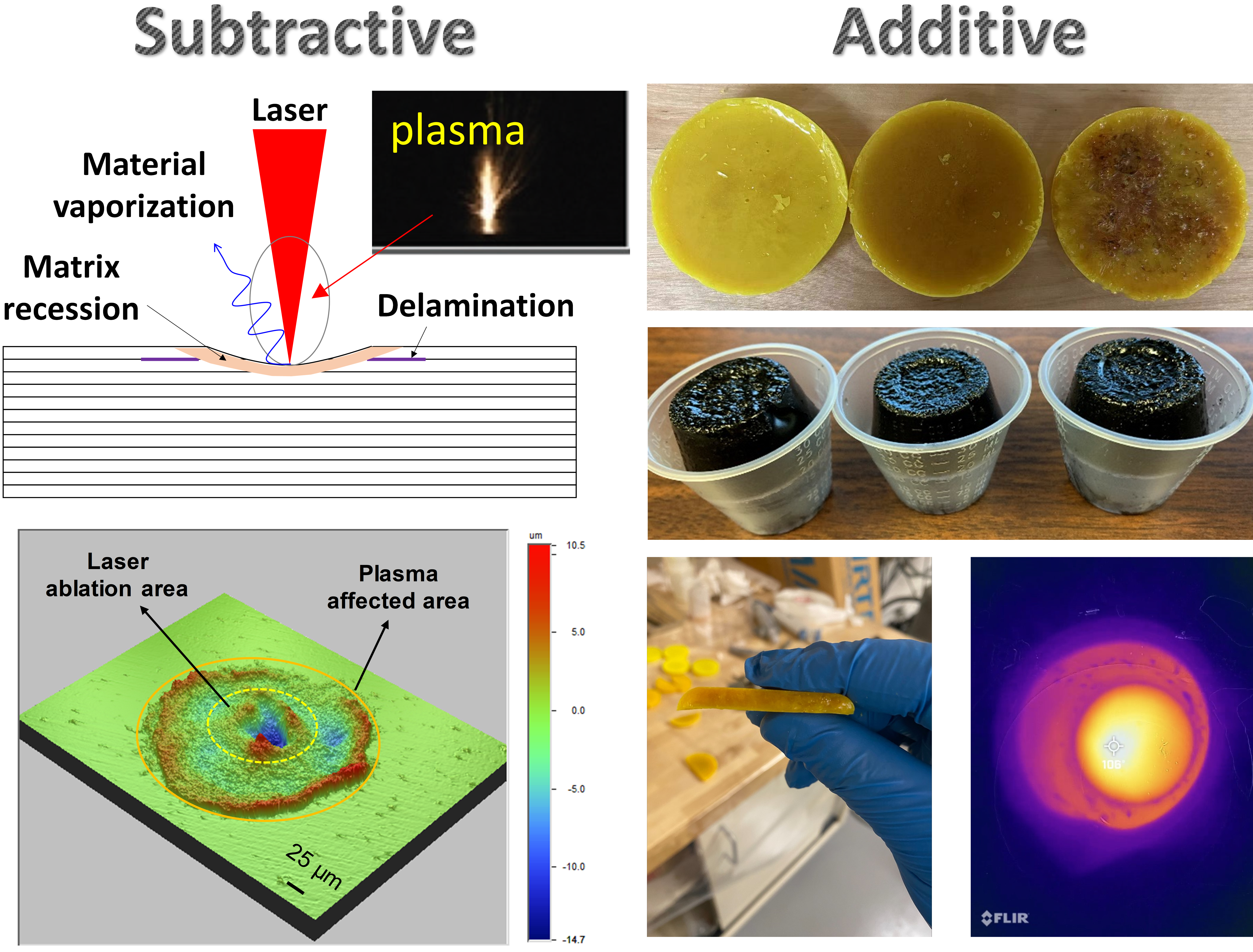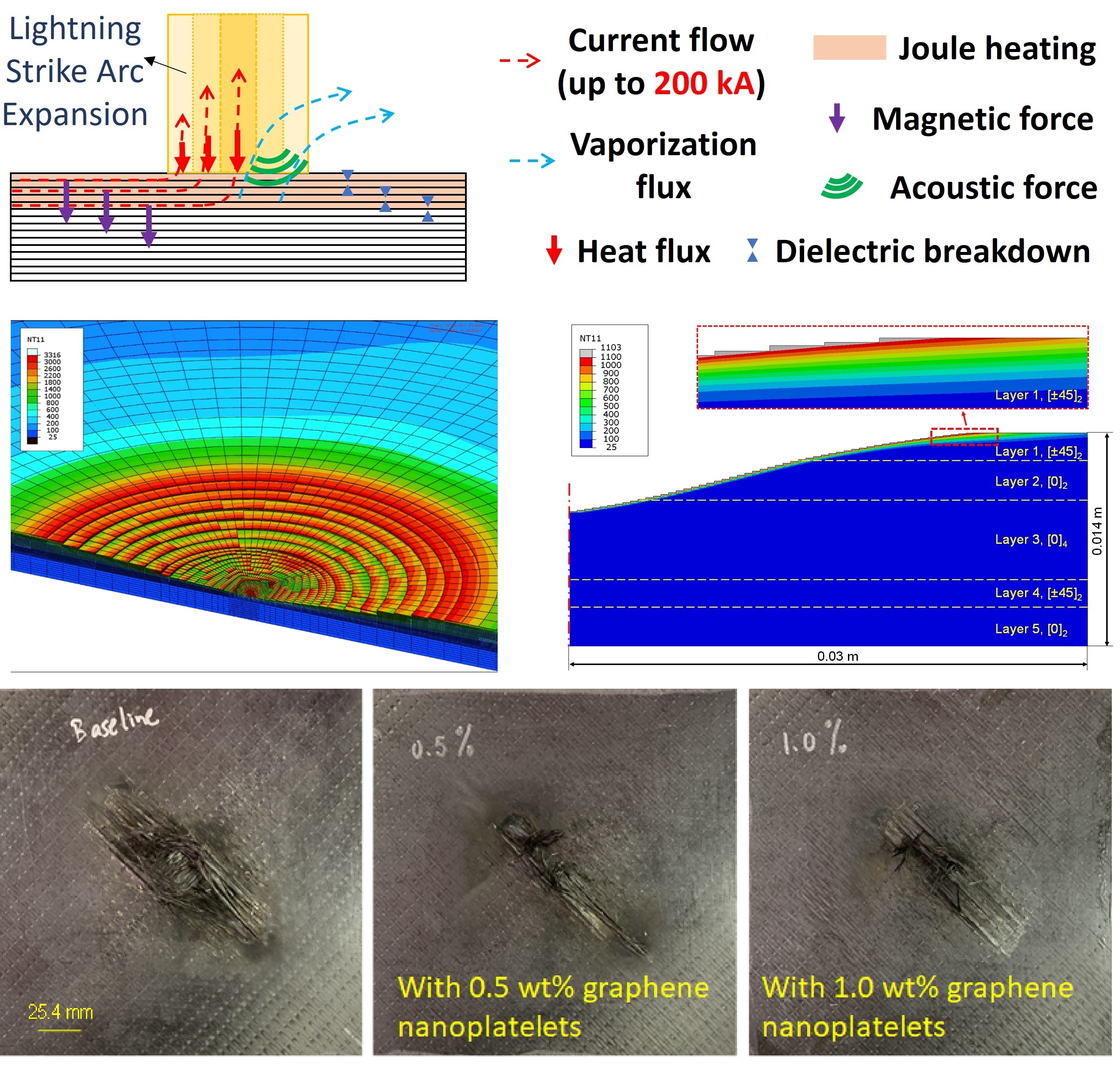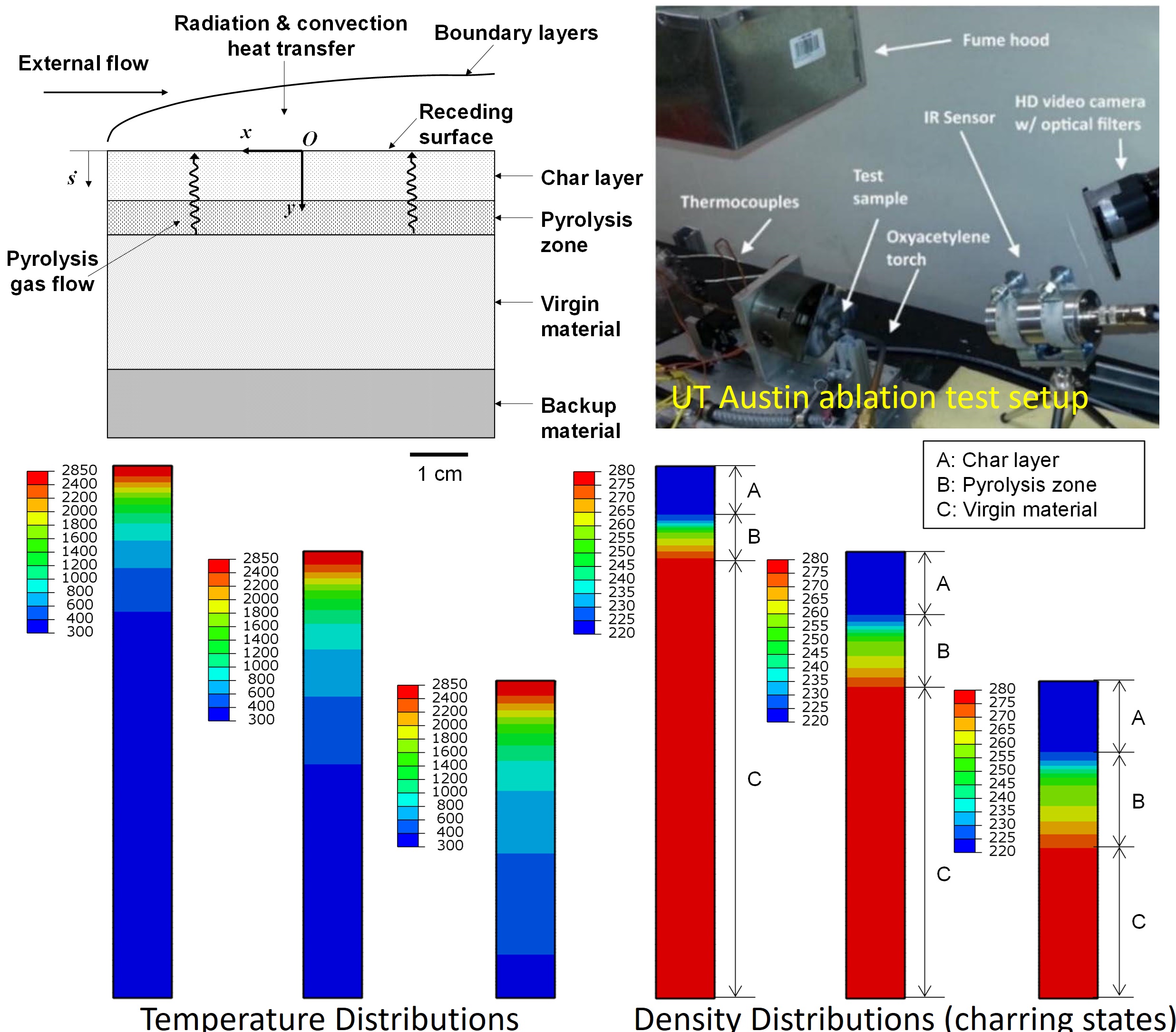Please do not hesitate to contact us (ywang261@syr.edu) if you see any topics that we could collaborate. We are very open to new ideas and suggestions and open to collaborations with researchers from both academia and industry.

Computational source codes including (1) element deletion method, (2) manual mesh moving method, (3) UMESHMOTION+ALE examples, (4) pulsed laser ablation code, and (5) low velocity impact model for CFRP composites can be found on under Publications
Research Topics
 Mechanics and Failure Mechamisms of Composite Materials
Mechanics and Failure Mechamisms of Composite Materials
Understanding the fundamental mechanics and failure mechanisms of composite materials is of great significance to the design and development of next generation composite structures. For example, to establish the minimum gage thickness of innovative fuselage composite structure designs. We investigate the deformation, fracture, and fatigue as well as joining of composite materials. In addition, we assess the damage tolerance and durability of composites. Through experimental testing and computational modeling, we aim to discern the material behavior and failure mechanisms under different mechanical loading conditions. The understanding we acquired will be used to guide the design and development of composite structures.
Testing machines in the SU-CML: Two MTS and one Instron servohydraulic testing machines, cryogenic and high temperature chambers, various ASTM and custom testing fixtures, C-scan, and optical microscope system, and etc.
 Advanced Manufacturing and Processing of Composite Structures
Advanced Manufacturing and Processing of Composite Structures
We conduct research in the advanced manufacturing and processing of composites, aiming to innovate both the subtractive and additive manufacturing techniques. The goal is to improve the manufacturing efficiency, reduce associated costs, and at the same time improve the manufacturing quality. Topics of subtractive manufacturing include laser ablation of composites for applications in laser cutting, drilling, surface patterning, and preprocessing prior to adhesive bonding. Topics of additive manufacturing include rapid consolidation of thermoset fiber composites for direct 3D printing and additive manufacturing of lunar regolith composites for space habitats using local materials on the moon. We conduct research to understand critical factors that are dictating the manufacturing performance and the resulting properties of the composites, and then, use the understanding to control and optimize the manufacturing process.
Computational source codes: Manual Mesh Moving Procedure
 Lightning Strike Interaction with Composite Materials
Lightning Strike Interaction with Composite Materials
Data on lightning strike frequency to US commercial aircrafts has revealed that one strike is expected approximately per year per plane. Understanding the lightning strike damage mechanisms of composite materials is of great significance in the design and development of lightning strike protection (LSP) systems for aircraft and wind turbine blades. We aim to investigate the fundamental damage mechanisms of composite materials subjected to lightning strikes and seek solutions to enhance the electrical conductivity and mitigate lightning strike damage. We not only develop computational models but also conduct simulated lightning strike tests and develop novel lightweight and conductive composite materials for lightning strike damage mitigation.
Computational source codes: Progressive Element Deletion Method
 Fire Charring Ablation of Composite Materials
Fire Charring Ablation of Composite Materials
Charring ablation is an important physical process of composite materials when they are exposed to fire, combustion, and atmoshperic entry. Understanding the ablation mechanisms are of great significance in the design and development of next generation thermal protection systems. We have developed a 1D charring ablation model using Finite Element Analysis with ABAQUS and multiple user subroutines. The model with the TACOT 3.0 material system predicts the temperature change, shape change, and charring yield of the material. It has been verified by comparisions with predictions from NASA FIAT. Model validations have also been carried out through comparisons with ablation test data provided by Dr. Joseph Koo's research group at the University of Texas at Austin. The ABAQUS subroutines are currently copyright protected through University of Florida.
Resources: Theoretical Ablative Composite for Open Testing (TACOT 3.0) Material System
 Machine Learning and Design Optimization
Machine Learning and Design Optimization
The problem of multiphysics analysis of solid materials (e.g., lightning strike of composites, laser/plasma manufacturing of composites, and curing of composites) is complex due to the large nonlinearity of the governing equations, potential moving boundary conditions, and temperature-dependent material parameters. Solving these complex governing equations is challenging, which typically requires using numerical simulations, such as using finite element analysis or finite volume method. Despite continued success and evolution, these methods rely on sophisticated numerical discretization, intricate fluid-material coupling strategies, and linear solvers to ensure stability, robustness, and efficiency. The application of these methods is complex and computationally prohibitive, especially when the material response model is coupled with a flow solver. An alternative is to develop cost-effective surrogate models. Our lab is developing machine learning algorithms to build surrogate models to greatly reduce the computational time of solving governing equations (from several days to a few minutes) for fast design and optimizations.